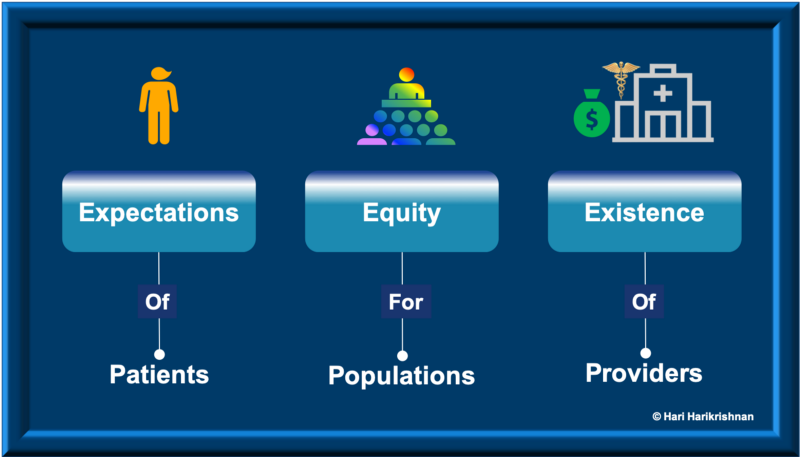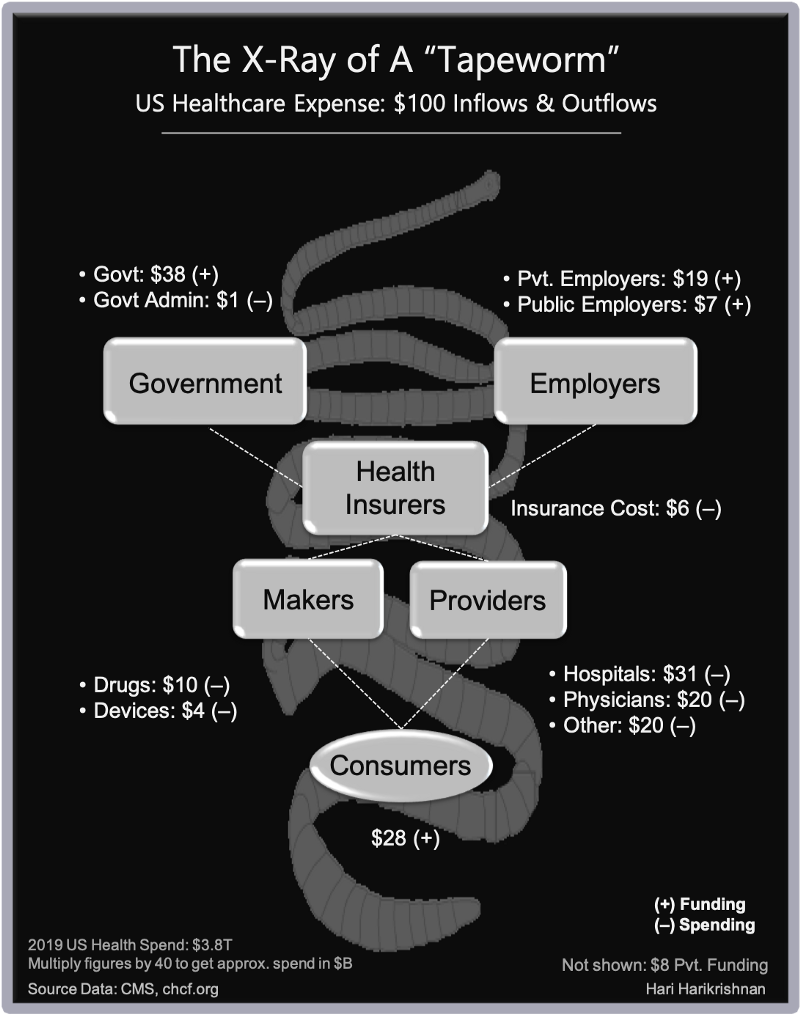What underlying structural factors will affect post-pandemic healthcare in the US?

2020. Annus horribilis. The year when considerations of health outweighed those of wealth globally, though we found them inseparably intertwined as millions lost their livelihoods.
The debate about how the pandemic transformed healthcare globally and in the US will go on for eons — everything from vaccine development to regulatory pathways, health policy, continuum of care delivery, and our response — individually and collectively.
I am sure we each have our unique takeaways based on the lens with which we view society, industry, and our own personal health or economic situation. Here’s my lens.
3E’s Shaping US Healthcare
In a year of turmoil not just in public health and its economic fallout, but also in social justice, 3 areas jumped out for me as shaping the future of our healthcare — 1. Expectation of patients, 2. Equity for populations, and 3. Existence of care providers.

Expectations of Patients
Before the Internet era, health information was hard to access. Several decades of information access via Internet has empowered us to do symptom checks before we show up for a doctor’s appointment. The pandemic has made it necessary for patients and providers to adopt Telehealth.
Patient empowerment has taken on a new dimension with the remote care
Trust barrier that existed around care from far has been shattered — both from patient’s acceptance of remote care and the provider’s existential imperative to offer it (or go out of business), along with policy changes to get compensated for it.
This is an irrevocable change in consumer behavior that is not going to go away once we get past this pandemic. How we build on this new foundation of behavior and receive care in different care settings and modalities — face-to-face, virtually, live, or offline — and how this affects efficacy and economics of care will be interesting to observe.
[ Related: Thoughts on whether great expectations beget better outcomes in this article on patient experience].
Equity for Populations
The awareness about inequities in social justice has reached a level we have not seen before. 2020 saw global repudiation of long-standing artifacts of racial and social injustice. Against this backdrop, unrelated to the pandemic though coinciding it, we saw how virus devastates certain groups.
Virus maybe an equal-opportunity parasite, but it is not a great leveler.
We will discuss at length the color of covid in the broad context of social equity.

For the healthcare industry, the pandemic throws more spotlight on the social determinants of health (SDOH) and how we should bring more accessible care to groups across the spectrum of colors in our society.
Existence of Providers
During the pandemic we cancelled our screenings, our routine visits, our dental care; postponed our surgeries or elective surgeries were suspended. To providers of non-urgent, non-critical care, their patients vanished overnight (some came back on camera).
Pandemic seen from some providers’ view is ironically akin to entire patient populations becoming healthy overnight.
We joke about our healthcare being really about sick-care. It isn’t anything to laugh at when small and big provider business models, built on sick-care, are threatened by no-shows induced by the pandemic. At the peak of a health contagion, we were laying off people or shutting down clinics.

Independent physician practices to hospitals are in various stages of financial distress. The existence of providers, especially the small businesses who can’t absorb the economic shock, is threatened.
About a 100 years ago, health insurance came into existence to prevent surprise medical bills that bankrupted people by stabilizing patients’ monthly expenses.
On the other hand, bulk of the physicians are paid by fee-for-service reimbursements for service rendered per visit or incident. There is no stability in their income. In 2020 most practices will see diminished revenues and a majority of primary care practices will lose money per this McKinsey survey.
More than ever, the fragility of providers’ existence, founded on sick-care, is exposed.
How will the provider’s payor-mix (sources of income from medicare/medicaid reimbursements, private insurance, patient-paid etc.) change? Will we see an accelerated shift to concierge-care where providers move to a patient-paid model? Will we finally move away from the fee-for-service model with its perverse incentives to a new payment model to stabilize healthcare provider incomes to ensure their financial health?
Our Response
How will the healthcare industry and policy-makers respond — from makers of drugs and devices to providers and payers? We have many balls to juggle and many large jugglers.
Will improving access to care and patient experience outweigh singular focus on cost? The push towards value-based care in the last decade saw us trying to balance quality and costs via accountable care and bundled payment initiatives. What incentives exist in the system today to improve access and experience for the long-run at scale?
Whatever we do to improve quality, access, costs, and experience, the 3Es of expectations, equity, and existence need to be factored in.
Do share your thoughts on key post-pandemic drivers for healthcare reforms in the US or in your country.
Originally published at https://www.linkedin.com.





